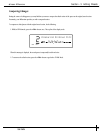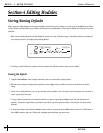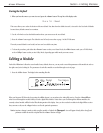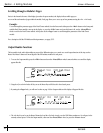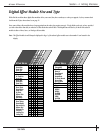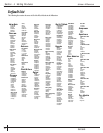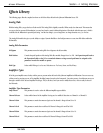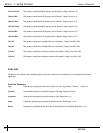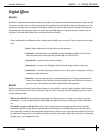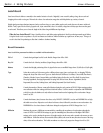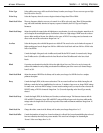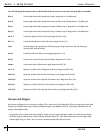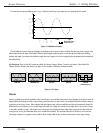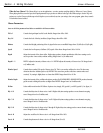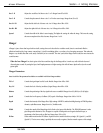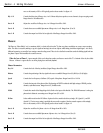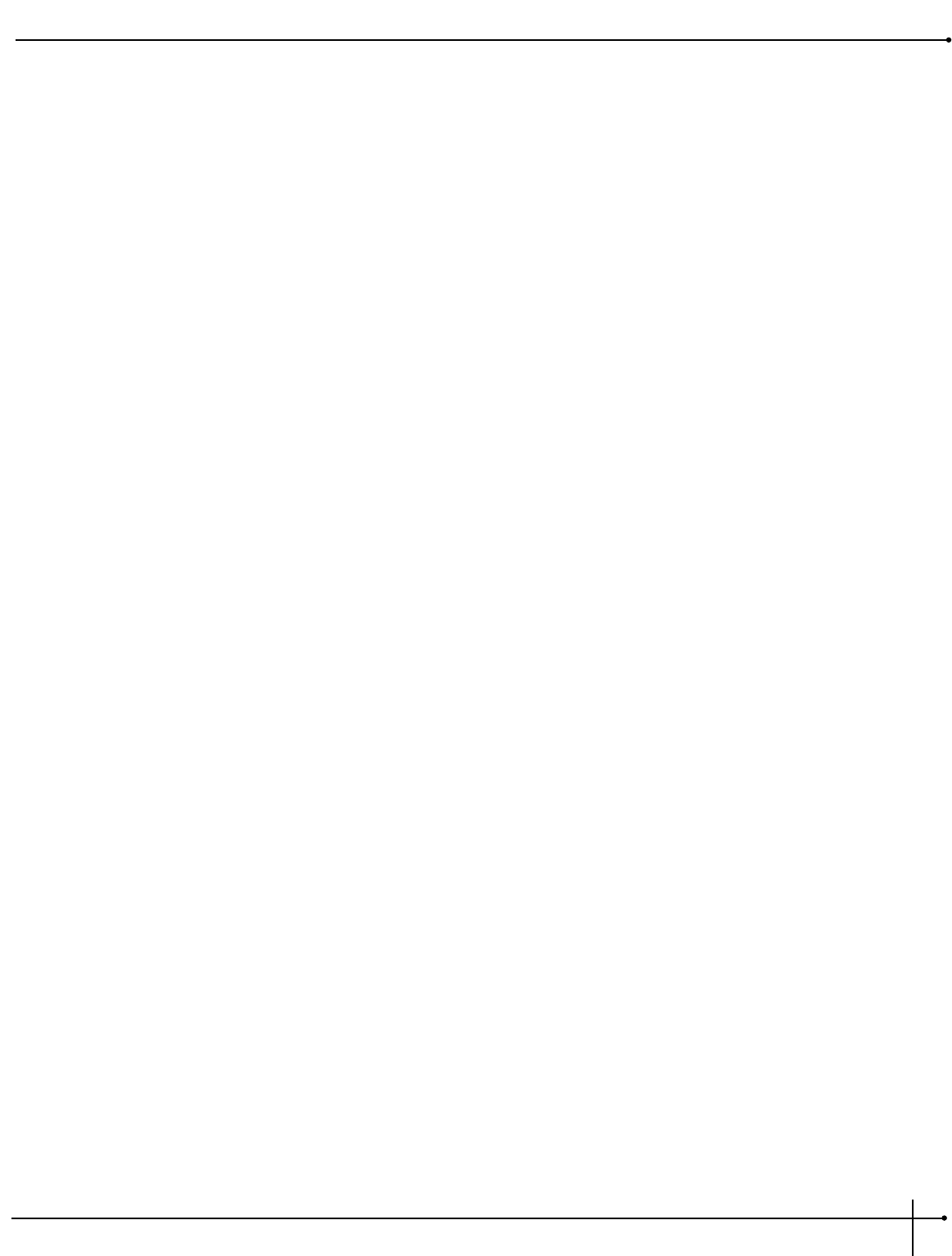
Digital Effects
Reverbs
Reverberation is probably the most widely used effect because it allows you to simulate the sound reflection characteristics of almost any kind
of room. In a real room, reverb is a result of sound reflecting off room surfaces such as the walls, floor, ceiling, and objects in the room. The
materials, size, and shape of the room determine how long these reflections echo and decay before dying out completely. These factors also
help determine the audio characteristics of the room, such as how long the high-frequency reverberations ring when compared to the low
frequencies, or how much initial "slapback" the room wall produces when a sound hits.
Today’s technology allows the Millennium to offer a complete palette of flexible, easy to use reverbs. There are five basic reverbs to choose
from:
1) Reverb - Simple, straight ahead reverb with only the most basic parameters.
2) Dual Reverb - Multi-dimensional reverb with flexible frequency band-splitting capabilities. The reverb can be
divided into primary and secondary stages using selectable High or Low Pass cross-overs.
3) Stereo Reverb - A true stereo version of the Reverb Module.
4) Spring Reverb - A recreation of the old Spring Tank Reverb found in Vintage and Modern combo Amps.
5) Gated Reverbs - A very linear, high energy reverb that can be set to decay, stay flat, or ramp up the reverb decay,
creating many unique ambient effects.
6) Room Echo - A true stereo, multi-tap delay for creating small ambient spaces. The delays are divided into four
sections of early reflections. These reflections can be placed anywhere in the stereo field and can be as dense or
sparse as necessary. The Room Delay also includes a feedback loop for delay regeneration.
Reverb
Real life reverberation is the result of sound reflecting off surfaces in a room or hall. It can best be described as millions of small echoes that
decay over a period of time. The size of the room, the surface type of the walls, or the carpet on the floor all contribute to the way real rever-
beration behaves and sounds.
When do I use Reverb? When recording in the studio, nearly always. Many guitar tracks, for example, are recorded in a very sterile
environment (i.e. very dry), but adding reverb can add lush depth to any guitar track and you can get those great sounds in the Studio or
Live.
Why should I use stereo reverb? Digital Effects such as Chorus and Delay produce stereo imaging type effects. Stereo reverb helps
maintain that original stereo image. But don't forget that millions of hit recordings were made using mono input reverbs that created a
stereo output image. The theory is that sound generally originates from one point in a room, so mono often works just fine. The rule? Don’t
get caught using too much reverb on your guitar in live situations. Even if the room is small, it still produces some reverb. Too much makes
the guitar go away. Let it compliment the room.
Johnson Millennium
User Guide
Section - 4 Editing Modules
37



